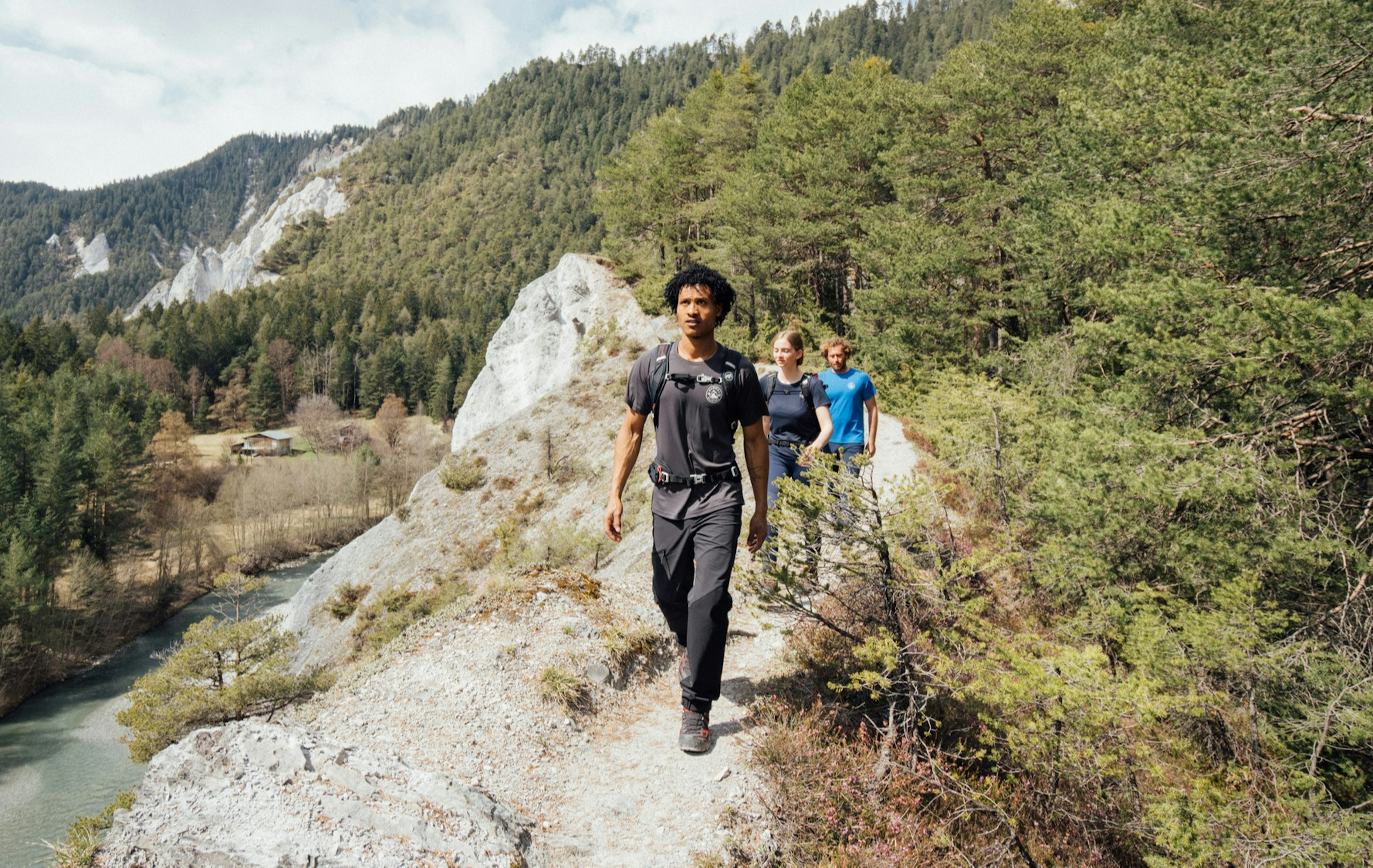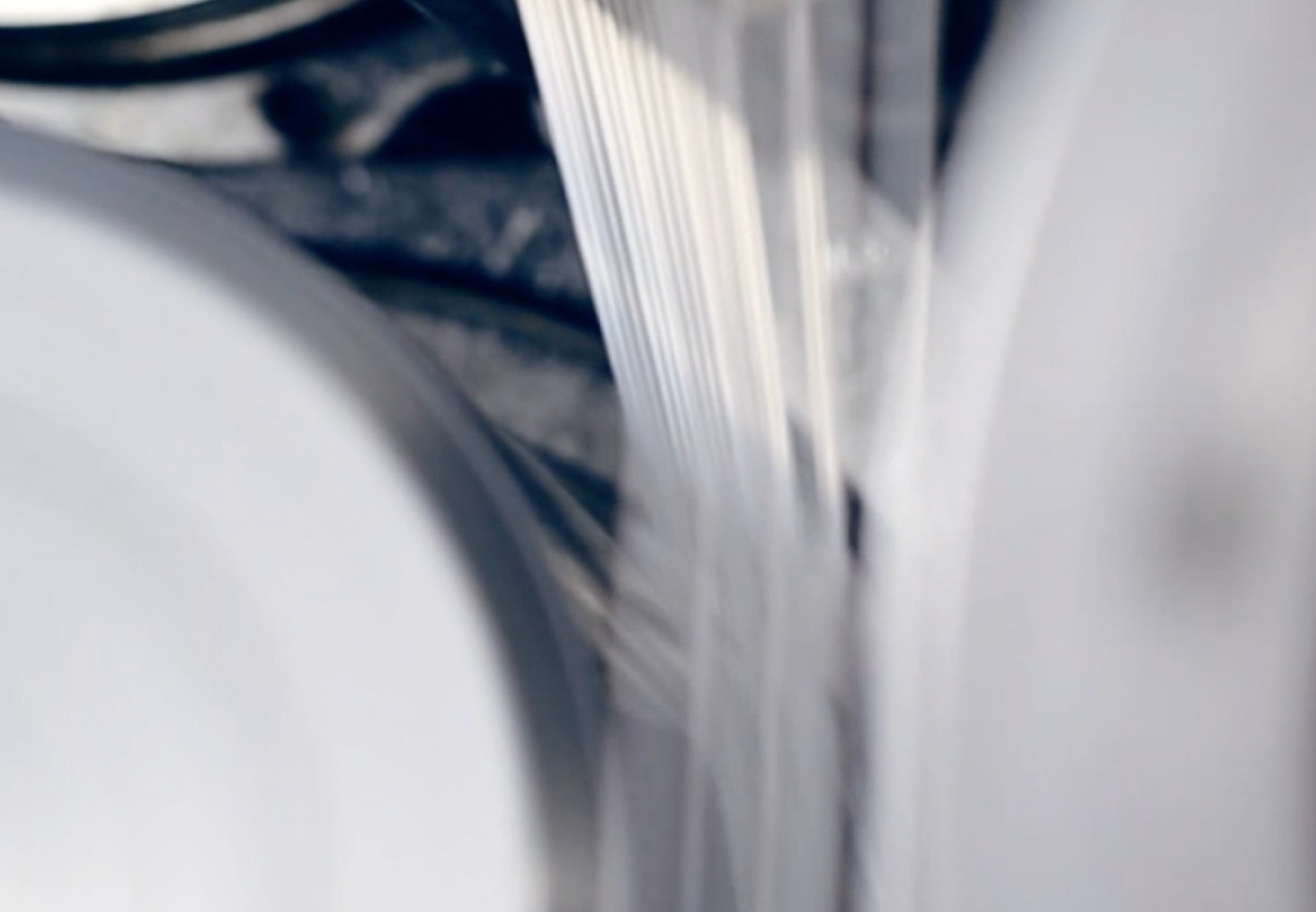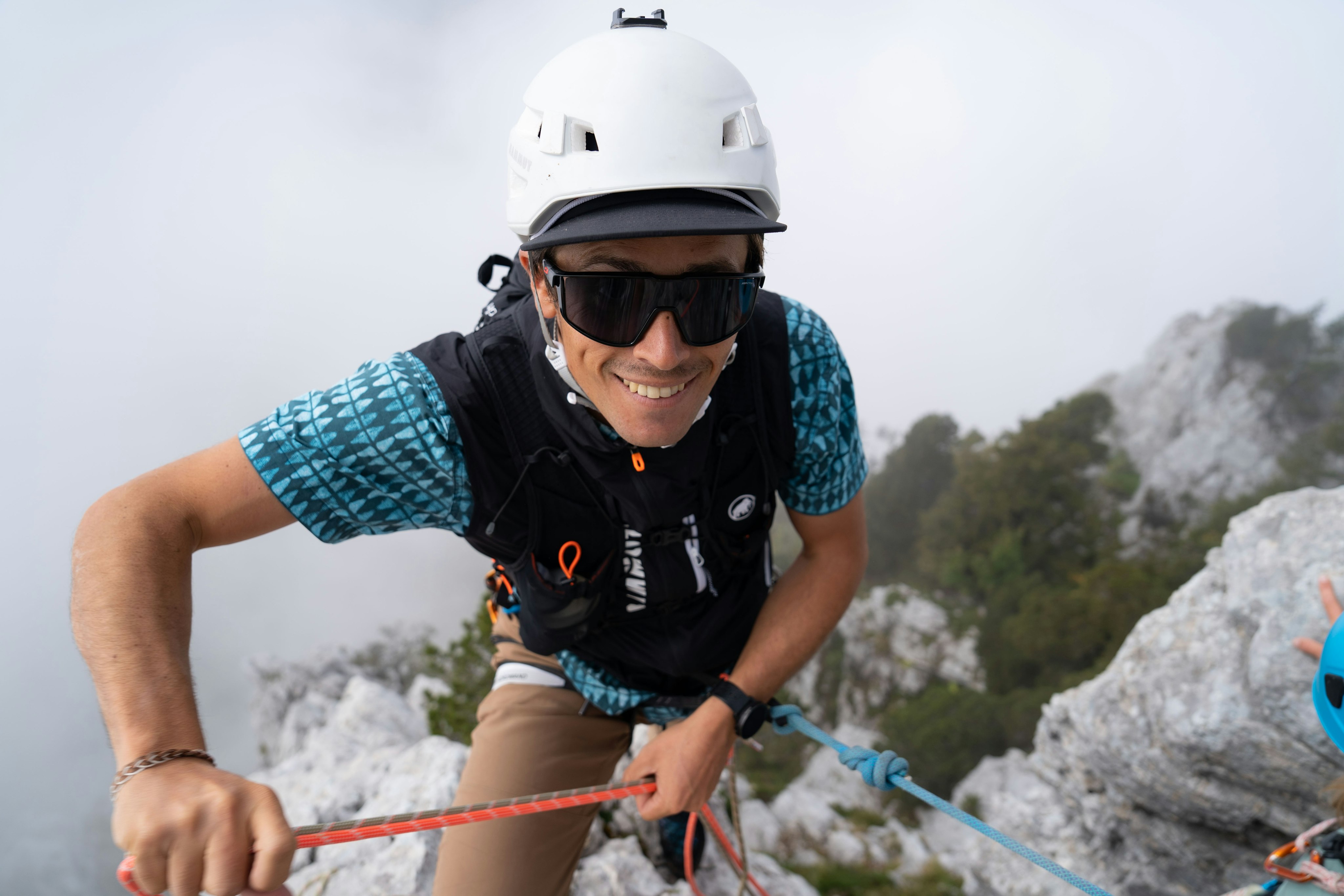Close the Loop
21/09

@ Stephan Wieser
You helped us create this shirt. Thank you.
The Close The Loop shirt is made with regenerated nylon sourced partly from used ropes. Your cooperation and our partnership with the non-profit organization Protect Our Winters, climbing gyms and collection points in Switzerland made it all possible. Thanks for doing your part!
We’re giving materials a second life – no waste, no new raw materials – and making a small contribution to protecting our climate. What’s behind the project? It’s time to move towards a more circular economy if we’re to reach carbon neutrality and net zero – and you have to start somewhere! Our shirt is a good first step toward reaching the other big goals ahead.
"Making ropes generates a lot of CO2. We analyzed the various causes and decided to take action."
1. The electricity used in rope production makes up the lion’s share of emissions. Together with our rope manufacturer, we made some changes to ensure that all of our ropes are now produced with renewable energy.
2. Nylon is a petroleum-based fiber, and because ropes have high safety specifications, nylon 6 is the global standard for climbing ropes. We’re investing in innovation and research projects that will allow us to make ropes from recycled material as well as looking into the possibility of using bio-based nylon-like materials. Our goal is to do away with petroleum-based products in the not-too-distant future. Since ropes are made of the same material all over the world, they’re ideal for recycling and we can accept all different brands.
3. The “end-of-life” phase: Once a nylon product becomes damaged or worn out, it is normally thrown away. Our industry needs to undergo a fundamental shift from this linear “make, use, and dispose” path to a closed-loop system that reuses materials and conserves resources. We still have a long way to go, but there’s no time like the present. Our mission is to prove that the circular economy is not only possible – it’s vital.
Figures
100 days: The time it took us to launch our pilot project together with Protect our Winters, complete a proof of concept and establish a local supply chain. And what exactly did we prove then? That it truly is possible!
67%: How much CO2 we save per T-shirt compared to a regular T-shirt.
152 g: Weight of the functional shirt you wear when you go out hiking, jogging, climbing or bouldering. And HeiQ technology helps minimize odors and ensures it dries in a flash.
100%: Portion of the shirt made from recycled material – not to mention how committed we are to making this project something that significantly reduces CO2 emissions and has a positive impact on sustainability and our climate.
50: Number of rope collection points we already have in Switzerland. You can expect to see plenty more along with a service for shipping us your ropes from other countries. Click here to find out more.
2°C: Average rise in temperature in the Swiss Alps since Mammut was founded in 1862. This has led to a drastic transformation of the alpine landscape.
Our glaciers are the most obvious example and should motivate us to act. How have glaciers inspired you? Share your story on Instagram and tag with #TogetherForGlaciers.
By the way
Our rope recycling project received the Gold Award at ISPO 2021 and the German Sustainability Award in 2021.

What’s next?
As we mentioned, we’re only at the beginning of our journey. Want to find out more about how we’re moving towards a more circular economy, receive updates on how Mammut is taking action and what projects are currently underway? Sign up for our newsletter and receive information on corporate responsibility at Mammut.
